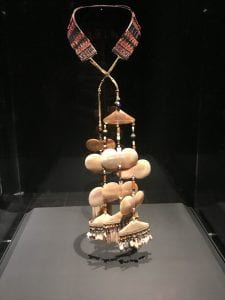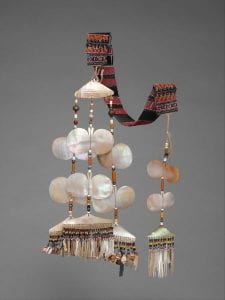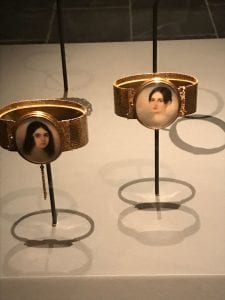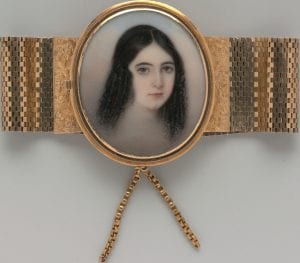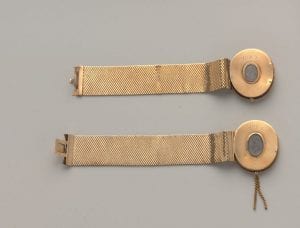Metropolitan Museum of Art
Jewelry: The Body Transformed
Peter Chang
Bracelet
British
1995
Jewelry
Polyester and epoxy resin
Gift of Donna Schneier, 2007
I thought it was a really unique piece as a bracelet. It does not look comfortable wearing it since it has a lot of tentacles, but it surprises me by its material: plastic. From my past experience, pieces designed like this would be made out of wood. Then after some research, I am aware that Peter’s intention of using plastic was to refer to the cheap and vain of modern society. If I would redesign it, I would have to use the transparency of plastic and add some gold to show its cheapness undercover.
Isneg
Neck and Chest ornament (Sipattal)
Philippines, Luzon Island
late 19th–early 20th century
Beads-Costumes, Isneg people
Shell, beads, fiber, metal
Bequest of John B. Elliott, 1997
It catches my eyes because of its size—-it is a large-scale as a necklace. We normally would not see a necklace like this in New York’s Boutique shop, pieces like this would be seen in tourist attraction resort around the beach more often. I personally favor this kind of decoration, the ones made out of all natural materials. I used to have one that is very similar to this, instead of the cotton thread but feathers on the bottom—-it also would be an option for me if I would redesign it, I think the way feathers interact with wind is beautiful, and also its softness would break the lumpish impression of the whole piece.
John Carlin
Pair of Bracelets with Portrait miniatures
New York, New York, United States
1840
Jewelry
Gold, watercolor on ivory, hair
Dale T. Johnson Fund, 2001
A piece of jewelry with a portrait reminds of souvenirs. Jewelry is the thing we put very close to our body, therefore if someone wears a piece of jewelry with a picture of someone, it means that person is important to him. However, it still scares me when I see there is human hair involved in the process of making it, it makes me think of witchcraft immediately. The research told me the identities of the sitters remain unknown, which provide a mystery to this jewelry even more. If it were me, I would not use the hair if not for a specific purpose.
Joaquín Sorolla y Bastida
The Bath, Jávea
Spain
1905
Paintings
Oil on Canvas
Catharine Lorillard Wolfe Collection, Wolfe Fund, 1909
As a comparison to the bracelets mentioned above, there both have paintings of young girls, no matter face or body. It seems like artists are very much interested in using young girls as sitters. Different from the previous one, Sorolla used his wife and daughter as sitter of his painting, and gladly there is no hair involved.



